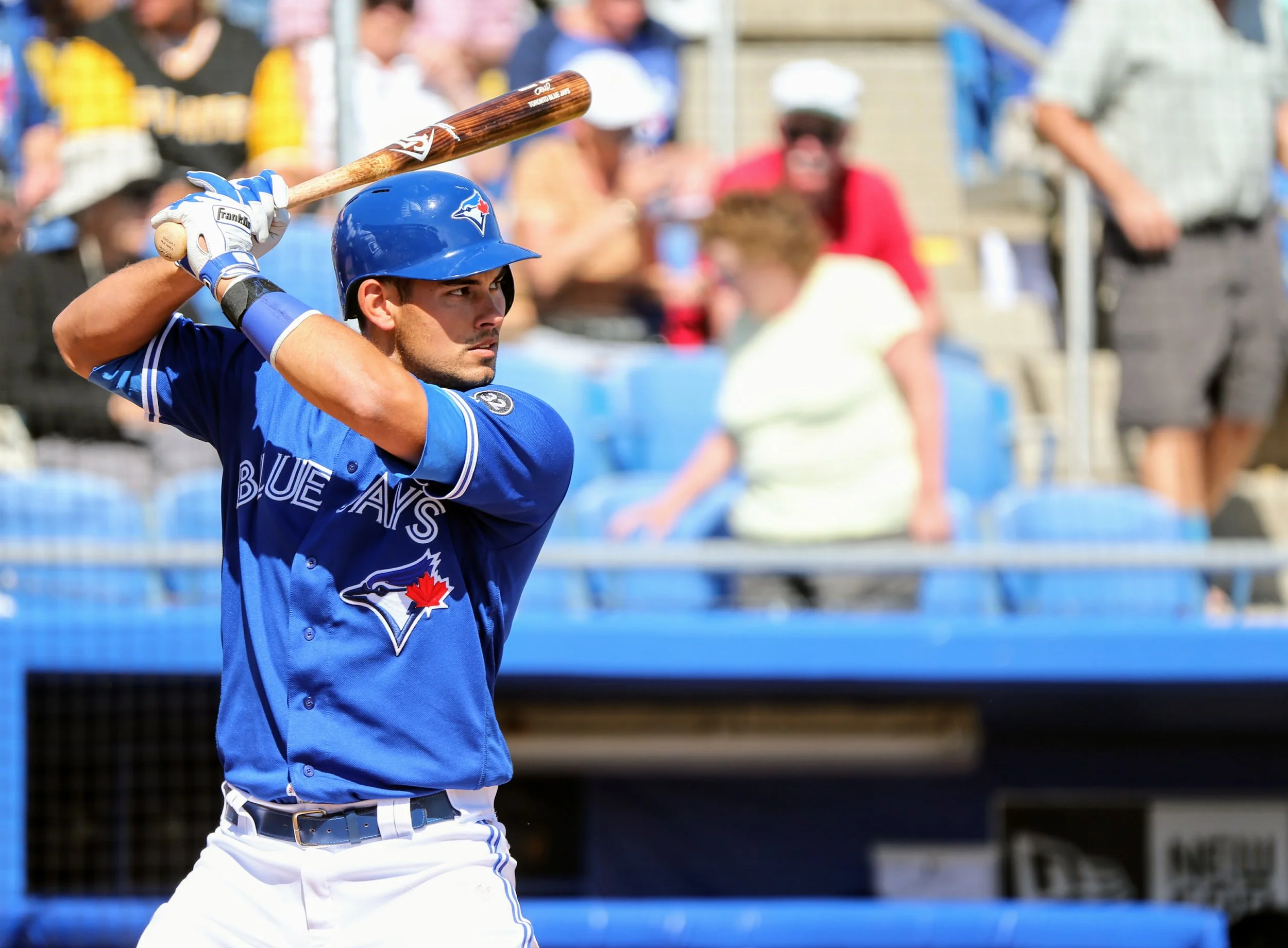What has changed for Luke Maile to have success in 2018?
Catcher Luke Maile has been far more productive at the plate for the Toronto Blue Jays this season. Photo Credit: Amanda Fewer
By Cole Shelton
Canadian Baseball Network
Throughout the 2017 season for the Toronto Blue Jays, it seemed like they could not buy a hit from the plethora of backup catchers that they employed.
Luke Maile, the one who stuck the longest, was no different. In 46 games, he hit .146 with a .176 on-base percentage and had just two home runs and seven RBIs. Fast forward to 2018 and Maile, in just 20 games, is hitting .324 with a .403 on-base percentage and already matching last year's home run total and doubling his RBI count with 14.
How can one player who could barely get on-base or hit the ball in 2017 become of the best hitters on the Blue Jays so far in 2018?
To start off, Maile has had a huge increase in exit velocity. In 2017, his exit velocity was 83.3 according to baseball-savant, which is not very good. Look to 2018 and Maile’s exit velocity is 92.9 almost 10 miles per hour higher. More exit velocity coming off the bat means harder contact which results in doubles, home runs and hard-hit singles, which shows as in 2017 Maile’s hard contact rate was just 20.8%. Compare that to 2018 and Maile’s hard contact rate is an astonishing 56.1%, a huge increase.
Why Maile is getting more exit velocity is quite simple. Along with him having harder contact, he is hitting the ball at the right spot off the bat. Maile is making solid contact with 12.2% of his contact, while his weak contact is down from 8.3% in 2017 to 2.4% this year. Maile, as well in 2017, really struggled to make good contact on the ball as he topped the ball 41.7% of the time and got under it 31.3%. Really meaning that Maile was close to having solid contact a whole bunch last season, but he was just a little too late or too early with his swing. Now in 2018, Maile has figured that out, as he is topping it just 26.8% of the time and getting under it 17.1% of the time, a significant difference from the 31.3% in 2017.
While Maile is hitting the ball more, something else he is doing better in 2018 compared to 2017 is that he is not swinging at pitches outside the strike zone. Last season, Maile was chasing 32.5% of all pitches thrown outside the strike zone which is a fairly high number. Now, in 2018, with more plate discipline, Maile is just chasing at 26.2.% of balls outside the zone. Maile is also swinging less at the first pitch, which has been a 3.1% drop. This allows him to work the count.
Something that is also working on Maile’s side at the plate is that he is hitting the ball all over the field resulting in the opposing teams having him to play him straight up defensively, with no shifts, which in turn creates holes for Maile to hit through.
Maile finally started to time his swing correctly in 2018 which has meant fewer weak fly balls or weak grounders and in harder contact, which has resulted in more hits. Maile looks like he has no signs of stopping as he is still getting good pitches to hit and is hitting them. While when Maile gets bad pitches, he is being patient at the plate, something that he hasn’t been in his career.
Put all this together and Maile is having a phenomenal start to the season and will look to continue to have success and have a career year in 2018 and really anchor the backup catcher role.

